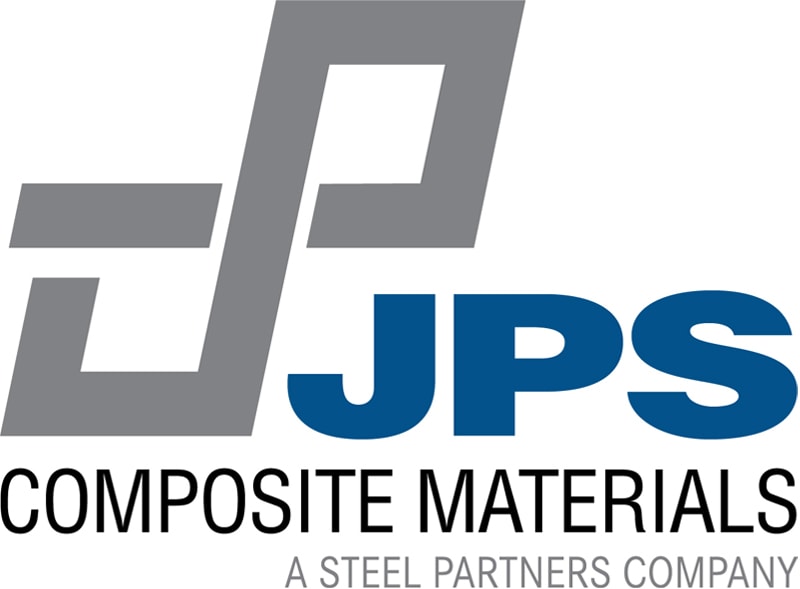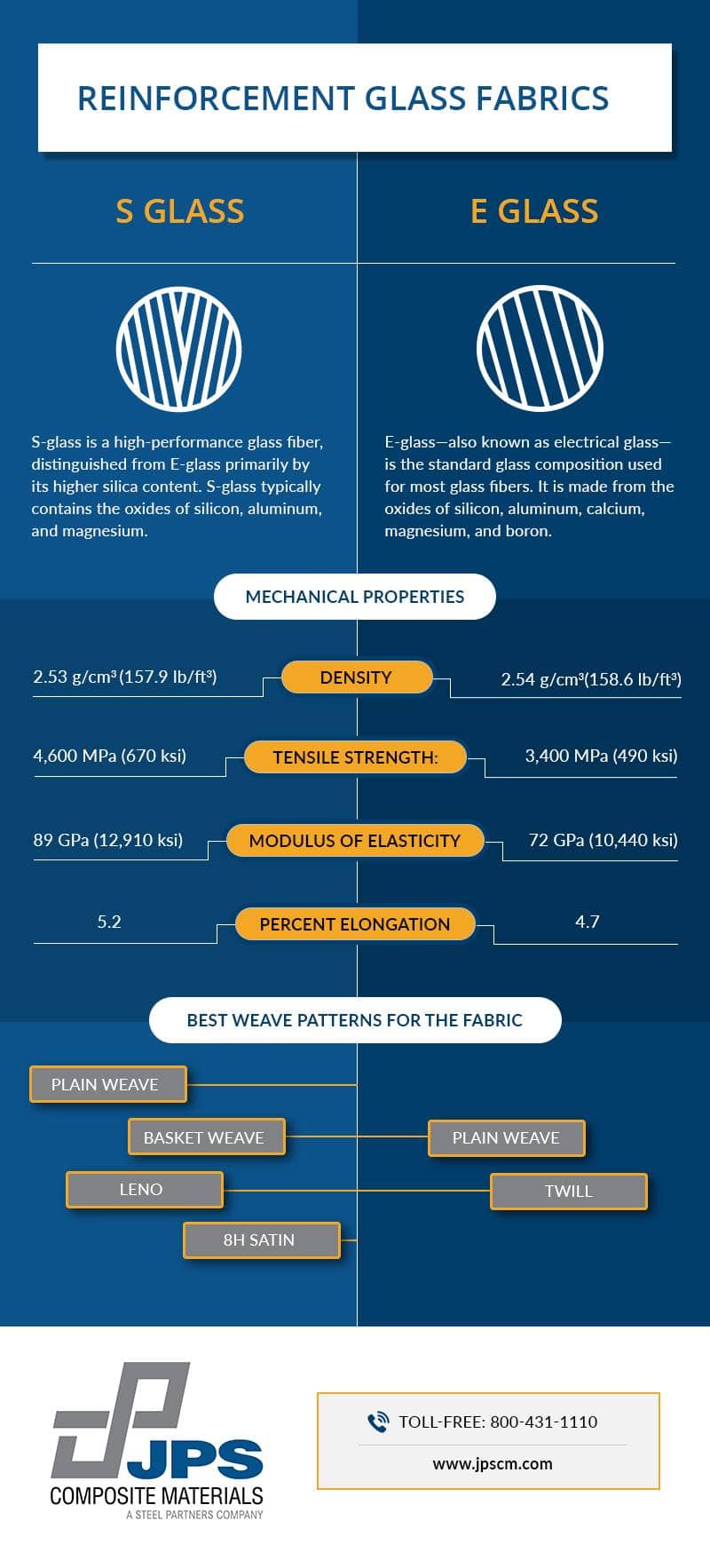At JPS Composite Materials, we are the largest weaver of glass fabrics in North America. Glass fabrics—also known as fiberglass fabrics—generally exhibit excellent shear strength, thermal stability, and electrical properties, all of which make them suitable for use in composites applications across a wide range of industries. However, they are also available in many formulations, each of which offers slightly different characteristics that make it suitable for distinct use cases.
We supply S-glass and E-glass fabrics. This material selection, combined with our composite reinforcement fabric manufacturing capabilities, enables us to produce composites for a variety of reinforcing, sound/thermal insulating, and ballistic protecting needs. We offer a range of glass finishing options to accommodate various resin systems and other material requirements and ensure the final material meets the customer’s performance requirements.
Composition and Characteristics of S-Glass
S-glass is a high performance glass fiber, distinguished from E-glass primarily by its higher silica content. S-glass typically contains the oxides of silicon, aluminum, and magnesium with the following mechanical properties:
- Density: 2.53 g/cm3 (157.9 lb/ft3)
- Tensile strength: 4,600 MPa (670 ksi)
- Modulus of elasticity: 89 GPa (12,910 ksi)
- Percent elongation: 5.2
Compared to E-glass, S-fiberglass offers much higher tensile strength and elastic modulus as well as about 10% greater stiffness. Other key characteristics include excellent temperature resistance, good moisture resistance, and long fatigue and shelf lives. These qualities make it suitable for use in demanding applications. For example, it is commonly used in the aerospace industry for cargo liners, gaskets, and other interior components.
S-glass is available in a variety of weave patterns. Some of the best patterns for the fabric are:
- Plain weave: consists of fibers interlaced in an alternating over/under pattern
- Basket weave: consists of two or more fibers interlaced in an alternating over/under pattern
- Leno: consists of two or more warp fibers crossed over each other and interlaced with one or more fill fibers
- 8H satin: consists of one fill fiber floating over seven warp fibers and under one
Composition and Characteristics of E-Glass
E-glass—also known as electrical glass—is the standard glass composition used for most glass fibers. It is made from the oxides of silicon, aluminum, calcium, magnesium, and boron. It exhibits the following mechanical properties:
- Density: 2.54 g/cm3 (158.6 lb/ft3)
- Tensile strength: 3,400 MPa (490 ksi)
- Modulus of elasticity: 72 GPa (10,440 ksi)
- Percent elongation: 4.7
Compared to S-glass, E-fiberglass is more commonly used in the fiber-reinforced polymer composite industry. It offers a good balance between performance and cost, demonstrating excellent strength and stiffness (although not as good as S-glass) as well as good resistance to chemicals, moisture, and heat. Since it was developed specifically for use in electrical applications, one of its key characteristics is its ability to insulate electricity. In addition to electrical components, other typical uses for the material include aerospace and other industrial equipment components (e.g., heat shields), marine and other recreational equipment (e.g., surfboards), and general industrial components (e.g., awnings, belts, and gaskets).
E-glass is available in a variety of weave patterns. Some of the best patterns for the fabric are:
- Plain weave: consists of fibers interlaced in an alternating over/under pattern
- Twill: consists of warp fibers floating over two consecutive fill fibers
Reinforcement Glass Fabrics by JPS Composite Materials
Whether you need S-glass or E-glass, the experts at JPS Composite Materials have got you covered. We offer a broad selection of glass fabrics with various finish options (e.g., 1059H, 9779, 9827, 9836, and 9837) to suit different industries and applications. In addition to E-glass and S-glass, we also manufacture T-glass and L-glass. T-glass offers enhanced mechanical and thermal performance, while L-glass is a low-loss fiberglass fabric.
Individuals across a range of industries use our products. Some of the organizations that utilize our fabrics include:
- American Composites Manufacturers Association (ACMA)
- American Society for Testing and Materials International (ASTM)
- Association of the United States Army (AUSA)
- Institute for Printed Circuits-Association Connecting Electronic Industries (IPC)
- Society for Automotive Engineering International (SAE-AMS)
- Society for the Advancement of Materials and Process Engineering (SAMPE)
- Surf Industry Manufacturers Association (SIMA)
For more information about our glass fabrics or assistance choosing one for your application, contact us today.

